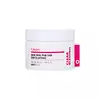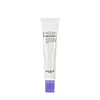What's inside
What's inside
 Key Ingredients
Key Ingredients

 Benefits
Benefits

 Concerns
Concerns

 Ingredients Side-by-side
Ingredients Side-by-side

Water
Skin ConditioningGlycerin
HumectantButylene Glycol
HumectantEthylhexyl Palmitate
EmollientCetearyl Olivate
Sorbitan Olivate
EmulsifyingHydroxyacetophenone
AntioxidantDimethicone
EmollientHydroxyethyl Acrylate/Sodium Acryloyldimethyl Taurate Copolymer
Emulsion StabilisingTrehalose
HumectantAmmonium Acryloyldimethyltaurate/Vp Copolymer
Ethylhexylglycerin
Skin ConditioningCentella Asiatica Extract
CleansingDisodium EDTA
Polysorbate 60
EmulsifyingSorbitan Isostearate
EmulsifyingPropanediol
SolventPanthenol
Skin ConditioningTocopheryl Acetate
AntioxidantCapryloyl Salicylic Acid
ExfoliatingSalicylic Acid
MaskingGluconolactone
Skin ConditioningGlycolic Acid
BufferingCeramide AP
Skin Conditioning1,2-Hexanediol
Skin ConditioningSodium Lauroyl Lactylate
EmulsifyingBenzyl Glycol
SolventHydrolyzed Glycosaminoglycans
HumectantSodium Hyaluronate
HumectantSodium Hyaluronate Crosspolymer
HumectantCeramide NP
Skin ConditioningPhenoxyethanol
PreservativePhytosphingosine
Skin ConditioningHydrolyzed Hyaluronic Acid
HumectantCholesterol
EmollientXanthan Gum
EmulsifyingCarbomer
Emulsion StabilisingMadecassoside
AntioxidantAsiaticoside
AntioxidantHydroxypropyltrimonium Hyaluronate
Asiatic Acid
Skin ConditioningMadecassic Acid
Skin ConditioningHyaluronic Acid
HumectantSodium Acetylated Hyaluronate
HumectantCeramide EOP
Skin ConditioningParfum
MaskingCitronellol
PerfumingGeraniol
PerfumingAlpha-Isomethyl Ionone
PerfumingLinalool
PerfumingHydroxycitronellal
PerfumingWater, Glycerin, Butylene Glycol, Ethylhexyl Palmitate, Cetearyl Olivate, Sorbitan Olivate, Hydroxyacetophenone, Dimethicone, Hydroxyethyl Acrylate/Sodium Acryloyldimethyl Taurate Copolymer, Trehalose, Ammonium Acryloyldimethyltaurate/Vp Copolymer, Ethylhexylglycerin, Centella Asiatica Extract, Disodium EDTA, Polysorbate 60, Sorbitan Isostearate, Propanediol, Panthenol, Tocopheryl Acetate, Capryloyl Salicylic Acid, Salicylic Acid, Gluconolactone, Glycolic Acid, Ceramide AP, 1,2-Hexanediol, Sodium Lauroyl Lactylate, Benzyl Glycol, Hydrolyzed Glycosaminoglycans, Sodium Hyaluronate, Sodium Hyaluronate Crosspolymer, Ceramide NP, Phenoxyethanol, Phytosphingosine, Hydrolyzed Hyaluronic Acid, Cholesterol, Xanthan Gum, Carbomer, Madecassoside, Asiaticoside, Hydroxypropyltrimonium Hyaluronate, Asiatic Acid, Madecassic Acid, Hyaluronic Acid, Sodium Acetylated Hyaluronate, Ceramide EOP, Parfum, Citronellol, Geraniol, Alpha-Isomethyl Ionone, Linalool, Hydroxycitronellal
Water
Skin ConditioningButylene Glycol
HumectantOlea Europaea Fruit Oil
MaskingGlycerin
HumectantIsododecane
EmollientSynthetic Wax
AbrasiveSqualane
EmollientCyclopentasiloxane
EmollientCetearyl Olivate
Cyclomethicone
EmollientCyclohexasiloxane
Emollient1,2-Hexanediol
Skin ConditioningHelianthus Annuus Seed Oil
EmollientGlyceryl Stearate
EmollientSorbitan Olivate
EmulsifyingPEG-100 Stearate
Palmitic Acid
EmollientSodium Acrylates Copolymer
Stearic Acid
CleansingDimethicone
EmollientLecithin
EmollientC30-45 Olefin
Skin ConditioningPhenyl Methicone
EmollientBetula Platyphylla Japonica Juice
Skin ConditioningEthylhexylglycerin
Skin ConditioningCitrus Aurantium Dulcis Oil
MaskingPortulaca Oleracea Extract
Skin ConditioningAsiaticoside
AntioxidantAsiatic Acid
Skin ConditioningMadecassic Acid
Skin ConditioningStearoxytrimethylsilane
EmollientCitrus Limon Peel Oil
MaskingDisodium EDTA
Citrus Aurantium Bergamia Fruit Oil
MaskingCoptis Japonica Extract
AntimicrobialGlycolic Acid
BufferingDimethyl Sulfone
SolventSalicylic Acid
MaskingTocopherol
AntioxidantLavandula Angustifolia Oil
MaskingDextrin
AbsorbentTheobroma Cacao Extract
Skin ConditioningSodium Hyaluronate
HumectantPelargonium Graveolens Flower Oil
MaskingOcimum Basilicum Oil
MaskingBeta-Glucan
Skin ConditioningWater, Butylene Glycol, Olea Europaea Fruit Oil, Glycerin, Isododecane, Synthetic Wax, Squalane, Cyclopentasiloxane, Cetearyl Olivate, Cyclomethicone, Cyclohexasiloxane, 1,2-Hexanediol, Helianthus Annuus Seed Oil, Glyceryl Stearate, Sorbitan Olivate, PEG-100 Stearate, Palmitic Acid, Sodium Acrylates Copolymer, Stearic Acid, Dimethicone, Lecithin, C30-45 Olefin, Phenyl Methicone, Betula Platyphylla Japonica Juice, Ethylhexylglycerin, Citrus Aurantium Dulcis Oil, Portulaca Oleracea Extract, Asiaticoside, Asiatic Acid, Madecassic Acid, Stearoxytrimethylsilane, Citrus Limon Peel Oil, Disodium EDTA, Citrus Aurantium Bergamia Fruit Oil, Coptis Japonica Extract, Glycolic Acid, Dimethyl Sulfone, Salicylic Acid, Tocopherol, Lavandula Angustifolia Oil, Dextrin, Theobroma Cacao Extract, Sodium Hyaluronate, Pelargonium Graveolens Flower Oil, Ocimum Basilicum Oil, Beta-Glucan
Ingredients Explained
These ingredients are found in both products.
Ingredients higher up in an ingredient list are typically present in a larger amount.
1,2-Hexanediol is a synthetic liquid and another multi-functional powerhouse.
It is a:
- Humectant, drawing moisture into the skin
- Emollient, helping to soften skin
- Solvent, dispersing and stabilizing formulas
- Preservative booster, enhancing the antimicrobial activity of other preservatives
Asiatic Acid is a major component of Centella Asiatica Extract. It has wound-healing, anti-inflammatory, and antioxidant properties.
Studies show Asiatic Acid is able to block the pathway for skin inflammation receptors, helping to soothe skin.
As an antioxidant, asiatic acid helps protect our skin against damaging environmental factors.
Learn more about Asiatic AcidAsiaticoside comes from the super popular skin-soothing ingredient, Centella asiatica. It is one of four active compounds found in the extract of Centella Asiatica.
Asiaticoside is an antioxidant and helps with wound healing. It has been shown to increase antioxidant activity during the wound healing process.
Butylene Glycol (or BG) is used within cosmetic products for a few different reasons:
Overall, Butylene Glycol is a safe and well-rounded ingredient that works well with other ingredients.
Though this ingredient works well with most skin types, some people with sensitive skin may experience a reaction such as allergic rashes, closed comedones, or itchiness.
Learn more about Butylene GlycolCetearyl Olivate is an emulsifier and texture enhancer. It is derived from the fatty acids of olive oil and Cetearyl alcohol, and is biodegradable.
As an emulsifier, it is used to prevent oils and waters from separating. It can also
Manufacturers use the name Olivem 1000. This ingredient has been found to preserve the natural microbiome of skin. Having a healthy microbiome helps keep our skin healthy and protects against harmful bacteria. This ingredient is grouped with Sorbitan Olivate under the name Olivem 1000.
Learn more about Cetearyl OlivateDimethicone is a type of synthetic silicone created from natural materials such as quartz.
What it does:
Dimethicone comes in different viscosities:
Depending on the viscosity, dimethicone has different properties.
Ingredients lists don't always show which type is used, so we recommend reaching out to the brand if you have questions about the viscosity.
This ingredient is unlikely to cause irritation because it does not get absorbed into skin. However, people with silicone allergies should be careful about using this ingredient.
Note: Dimethicone may contribute to pilling. This is because it is not oil or water soluble, so pilling may occur when layered with products. When mixed with heavy oils in a formula, the outcome is also quite greasy.
Learn more about DimethiconeDisodium EDTA plays a role in making products more stable by aiding other preservatives.
It is a chelating agent, meaning it neutralizes metal ions that may be found in a product.
Disodium EDTA is a salt of edetic acid and is found to be safe in cosmetic ingredients.
Learn more about Disodium EDTAEthylhexylglycerin (we can't pronounce this either) is commonly used as a preservative and skin softener. It is derived from glyceryl.
You might see Ethylhexylglycerin often paired with other preservatives such as phenoxyethanol. Ethylhexylglycerin has been found to increase the effectiveness of these other preservatives.
Glycerin is already naturally found in your skin. It helps moisturize and protect your skin.
A study from 2016 found glycerin to be more effective as a humectant than AHAs and hyaluronic acid.
As a humectant, it helps the skin stay hydrated by pulling moisture to your skin. The low molecular weight of glycerin allows it to pull moisture into the deeper layers of your skin.
Hydrated skin improves your skin barrier; Your skin barrier helps protect against irritants and bacteria.
Glycerin has also been found to have antimicrobial and antiviral properties. Due to these properties, glycerin is often used in wound and burn treatments.
In cosmetics, glycerin is usually derived from plants such as soybean or palm. However, it can also be sourced from animals, such as tallow or animal fat.
This ingredient is organic, colorless, odorless, and non-toxic.
Glycerin is the name for this ingredient in American English. British English uses Glycerol/Glycerine.
Learn more about GlycerinGlycolic Acid is arguably the most famous alpha hydroxy acid (AHA) with tons of research backing its benefits.
It is found naturally in sugar cane but the form used in skincare is usually synthetic for purity and stability.
Glycolic acid removes the top layer of dead skin cells to allow newer and fresher ones to emerge.
AHAs work by breaking down the structural “glue” that holds old skin cells in place. When that buildup is gone, your skin can renew itself more efficiently.
Research also shows glycolic acid stimulates collagen production, helping to firm and thicken the skin over time. This is one of its biggest advantages over other AHAs.
Overall, glycolic acid helps with:
Fun fact: Glycolic acid boosts skin hydration by helping it produce molecules that increase hyaluronic acid naturally.
To work best, glycolic acid products should have a pH between 3-4 (that’s where exfoliation is most effective but still gentle on skin).
The pH and concentration of a product are key to its effectiveness:
It is normal to feel a slight stinging sensation when using glycolic acid. This usually fades as your skin adjusts.
Because glycolic acid has the smallest molecular size in the AHA family, it can penetrate deeper, which enhances its effectiveness but also makes it more likely to irritate sensitive skin.
If your skin is very sensitive or prone to rosacea, glycolic acid may be too strong; in that case, try milder options like lactic acid or a PHA instead.
Recent studies suggest glycolic acid might even help protect against UV damage. But don’t skip sunscreen! Freshly exfoliated skin is more sensitive to the sun.
Glycolic acid is a skincare superstar. It smooths, brightens, hydrates, and firms the skin. Unless you’re highly sensitive, it’s well worth adding to your routine.
Read more about some other popular AHA's here:
Learn more about Glycolic AcidMadecassic Acid is a major component of Centella Asiatica Extract. It has anti-inflammatory and antioxidant properties.
It is a triterpenoid, meaning it naturally acts as an antioxidant. Antioxidants protect your skin against damage from environmental factors such as pollution and UV.
Studies show Madecassic Acid helps soothe the skin due to its ability to block inflammation pathways.
Learn more about Madecassic AcidSalicylic Acid (also known as beta hydroxy acid or BHA) is a well-known ingredient for treating skin that struggles with acne and clogged pores. It exfoliates both the skin's surface and deep within the pores to help clear out buildup, control oil, and reduce inflammation.
Unlike AHAs (alpha hydroxy acids), salicylic acid is oil-soluble. This allows it to penetrate into pores which makes it especially effective for treating blackheads and preventing future breakouts.
Salicylic acid is also known for its soothing properties. It has a similar structure to aspirin and can calm inflamed or irritated skin, making it a good option for acne-prone skin that is also sensitive.
Concentrations of 0.5-2% are recognized by the U.S. FDA as an over-the-counter topical acne product.
It can cause irritation and/or dryness if one's skin already has a compromised moisture barrier, so it's best to focus on repairing that before introducing this ingredient into your routine.
While salicylic acid does not increase sun sensitivity, it’s still important to wear sunscreen daily to protect your skin.
If you are looking for the ingredient called BHA or Butylated Hydroxyanisole, click here.
Learn more about Salicylic AcidSodium Hyaluronate is hyaluronic acid's salt form. It is commonly derived from the sodium salt of hyaluronic acid.
Like hyaluronic acid, it is great at holding water and acts as a humectant. This makes it a great skin hydrating ingredient.
Sodium Hyaluronate is naturally occurring in our bodies and is mostly found in eye fluid and joints.
These are some other common types of Hyaluronic Acid:
Learn more about Sodium HyaluronateSorbitan Olivate is created from the fatty acids in olive oil and sorbitol.
This ingredient is an oil in water emulsifier. It helps stabilize a product by preventing oils and waters from separating. Sorbitan Olivate also helps hydrate the skin.
Manufacturers sell sorbitan olivate under the name OliveM 1000. OliveM 1000 a multifunctional ingredient. It is self-emulsifying. According to a manufacturer, OliveM 1000 does not disrupt natural skin biome.
Due to its olive oil base, this ingredient may not be fungal-acne safe.
Learn more about Sorbitan OlivateWater. It's the most common cosmetic ingredient of all. You'll usually see it at the top of ingredient lists, meaning that it makes up the largest part of the product.
So why is it so popular? Water most often acts as a solvent - this means that it helps dissolve other ingredients into the formulation.
You'll also recognize water as that liquid we all need to stay alive. If you see this, drink a glass of water. Stay hydrated!
Learn more about Water